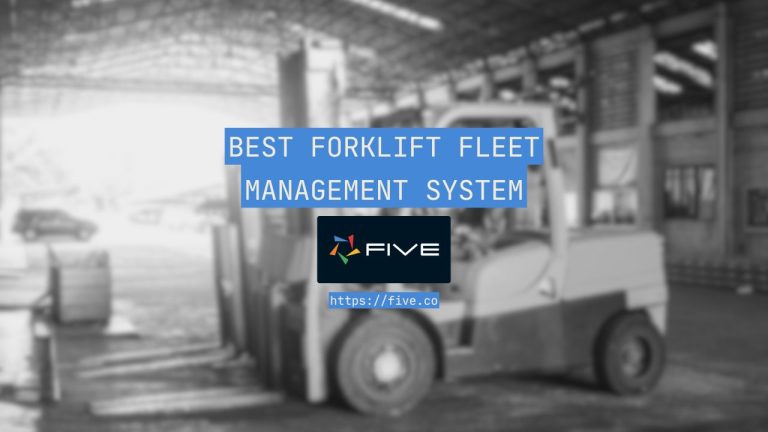Integrated Library System: Benefits, Features, and Best Solutions
Libraries in 2025 aren’t what they used to be. Gone are the days of manually stamping due dates or digging through card catalogs. Today, libraries are dynamic, tech-driven hubs where AI recommends your next read, cloud systems manage millions of resources, and patrons borrow e-books from their smartphones. At the heart of this transformation? The Integrated Library System (ILS), a digital backbone that streamlines everything from cataloging to loan management.
But not all ILS platforms keep up with the pace of change. While some still rely on outdated on-premise software, modern solutions like Five’s Library Database Application prioritize simplicity, scalability, and accessibility. With cloud hosting, intuitive interfaces, and subscription-based pricing, these tools are redefining what libraries can achieve in an increasingly digital world.
In this guide, we’ll explore the must-have features of a 2025-ready Integrated Library System, the tangible benefits for libraries and patrons, and the top solutions leading the charge. Whether you’re upgrading an existing system or starting from scratch, understanding these tools is key to staying relevant, and ensuring your library thrives in the years ahead.
Benefits of ILS in 2025
Libraries today face a paradox: they need to preserve the timeless value of knowledge while adapting to fast-evolving tech demands. A modern ILS bridges this gap, offering tangible advantages that go beyond mere digitization. Here’s how the right system transforms operations and user experiences:
Improve Operations
Imagine replacing hours of manual cataloging with tools that auto-tag genres, suggest metadata, and flag duplicates. Modern ILS platforms eliminate repetitive tasks, letting staff focus on strategic work—like curating niche collections or hosting community events. For example, Five’s system automates loan tracking, instantly updating return dates and sending overdue reminders, freeing librarians from tedious spreadsheets.
Enhanced User Experience
Patrons in 2025 expect Netflix-level convenience. Cloud-based ILS solutions like Five deliver 24/7 access to catalogs from any device, allowing users to search, reserve, or renew books during their morning commute. Some systems even integrate AI-driven recommendations (“Readers who borrowed Project Hail Mary also loved The Martian”), while dashboards give staff real-time insights into popular genres or peak borrowing times.
Cost Efficiency
Gone are the days of hefty upfront investments in servers and IT teams. Subscription models, like Five’s transparent monthly fee, cut costs by outsourcing hosting and maintenance to the cloud. Smaller libraries, in particular, benefit from scalable pricing—no need to pay for features they won’t use.
Data-Driven Decision-Making
What if your library could predict the next trending genre? Modern ILS tools analyze borrowing patterns, track engagement with digital resources, and generate reports to justify budget allocations. For instance, Five’s analytics dashboard highlights overdue hotspots or underutilized collections, helping libraries optimize their offerings.
Top ILS Solutions in 2025
Selecting the right Integrated Library System isn’t just about features—it’s about finding a tool that aligns with your library’s workflow, budget, and long-term goals. Below, we dissect 2025’s top contenders, focusing on practical strengths and real-world value.
Five’s Library Database Application
- Best For: Small-to-midsize libraries, schools, and private collections prioritizing ease and affordability.
Core Strengths
- Instant Deployment: Fully cloud-hosted—no installation, coding, or IT expertise required.
- Transparent Pricing: Flat monthly fee with no hidden costs or long-term contracts.
- Intuitive Design: A clean, role-based interface for staff (e.g., managers, interns) and patrons.
- All-in-One Simplicity: Manage loans, fines, catalogs, and patron accounts in a single dashboard.
- Scalability: Start with basic features and add modules (e.g., advanced analytics) as your library grows.
- Customer-Centric Support: Dedicated onboarding and same-day troubleshooting.
Ex Libris Alma
- Best For: Large academic libraries, research institutions, and consortia.
Core Strengths:
- Centralized Resource Management: Seamlessly manage physical, digital, and open-access collections in one platform.
- Collaboration Tools: Built-in support for multi-library networks, shared catalogs, and cross-institutional borrowing.
- Analytics Suite: Generate deep-dive reports on resource usage, budget allocation, and collection gaps.
- Hybrid Collection Support: Effortlessly balance print and digital resources, with tools for licensing e-books and tracking physical inventory.
OCLC WorldShare
- Best For: Public libraries and institutions prioritizing community resource-sharing.
Core Strengths:
- Shared Global Catalog: Tap into a network of 16,000+ libraries for interlibrary loans and collaborative acquisitions.
- Discovery Layer: A patron-friendly search interface that surfaces local and global holdings in seconds.
- Cost-Sharing Model: Reduce expenses through group purchasing of e-resources and databases.
- Community-Driven Metadata: Librarians worldwide contribute to and refine catalog records, ensuring accuracy.
Koha (Open Source)
- Best For: Libraries with technical staff or a desire for full control over their system.
Core Strengths:
- No Licensing Costs: Free, open-source software with no vendor lock-in.
- Customizability: Modify workflows, templates, and reports to fit niche needs (e.g., rare book collections).
- Active Community: Access plugins, forums, and volunteer-driven support.
- Offline Functionality: Manage loans and catalogs in low- or no-internet environments (ideal for rural libraries).
- Data Ownership: Host on-premise or in a private cloud for complete control over patron data.
FOLIO
- Best For: Libraries seeking modular, future-ready systems.
Core Strengths:
- Microservices Architecture: Pay only for the modules you need (e.g., acquisitions, analytics, or ERM).
- Vendor Neutrality: Avoid proprietary constraints with an open-source foundation.
- Developer-Friendly: Robust APIs for integrating third-party tools like CRM systems or digital archives.
- Hybrid Cloud Options: Choose between public cloud, private cloud, or on-premise deployment.
Comparison Snapshot
| Solution | Best For | Cost Model | Standout Trait |
|---|---|---|---|
| Ex Libris Alma | Large academic networks | Subscription | Global compliance & hybrid collections |
| OCLC WorldShare | Resource-sharing communities | Subscription | Shared global catalog |
| Koha | Budget-conscious customization | Free (open-source) | Offline functionality |
| FOLIO | Modular flexibility | Modular pricing | Microservices + hybrid hosting |
| Five | Simplicity & speed | Monthly fee | Zero setup, instant cloud access |
Why This Works
Each ILS caters to distinct needs:
- Five stands out for libraries wanting a hassle-free, modern system that “just works” without complex setups or hidden fees.
Choosing the Right Integrated Library System
Before comparing vendors, ask:
- What’s your library’s size and budget?
- Do you manage mostly physical, digital, or hybrid collections?
- Are you prioritizing self-service tools for patrons or back-end automation for staff?
Vendor Evaluation: Key Criteria
Not all ILS providers are equal. Use these questions to narrow your options:
- Subscription Pricing: Does the vendor offer flexible, transparent pricing (e.g., Five’s flat monthly fee) without hidden costs for updates or support?
- Ease of Setup: How long does deployment take? Solutions like Five’s cloud-hosted system require no installation—just login and go. Others may demand weeks of IT setup.
- Scalability: Can the system grow with your needs? Avoid platforms that charge exorbitant fees for adding users or resources.
- Support & Training: Is onboarding included? Does the vendor offer 24/7 support, or are you stuck with forums?
- Security: Does the platform comply with regional data laws? Look for role-based access (like Five’s staff/patron separation) and encryption.
- User Feedback: Talk to libraries similar to yours. Are they struggling with clunky interfaces, or raving about time saved?
Open Source vs. Proprietary vs. Subscription
Open Source (e.g., Koha, FOLIO):
- Pros: Full control, no licensing fees, customizable.
- Cons: Requires technical expertise, potential hidden costs for hosting/support.
Proprietary (e.g., Ex Libris Alma):
- Pros: Reliable support, polished features.
- Cons: Expensive licenses, vendor lock-in, slow updates.
Subscription-Based (e.g., Five, OCLC WorldShare):
- Pros: Lower upfront costs, automatic updates, scalability.
- Cons: Small Ongoing fees.
Why Subscription Models Shine: Platforms like Five bridge the gap between affordability and convenience. You get modern features without the burden of maintaining servers or paying six-figure licenses.
Conclusion
Library transformation hinges on choosing the right Integrated Library System. Whether it’s Alma’s global compliance tools, Koha’s open-source flexibility, or Five’s hassle-free cloud setup, the best ILS meets your library where it is—and scales to where it’s going.
Modern ILS platforms are about freeing librarians from mundane tasks to focus on what matters: curating collections, fostering literacy, and building connections. Solutions like Five prove that innovation doesn’t have to mean complexity. With intuitive design and transparent pricing, they allow even the smallest libraries to compete in a tech-driven world.


